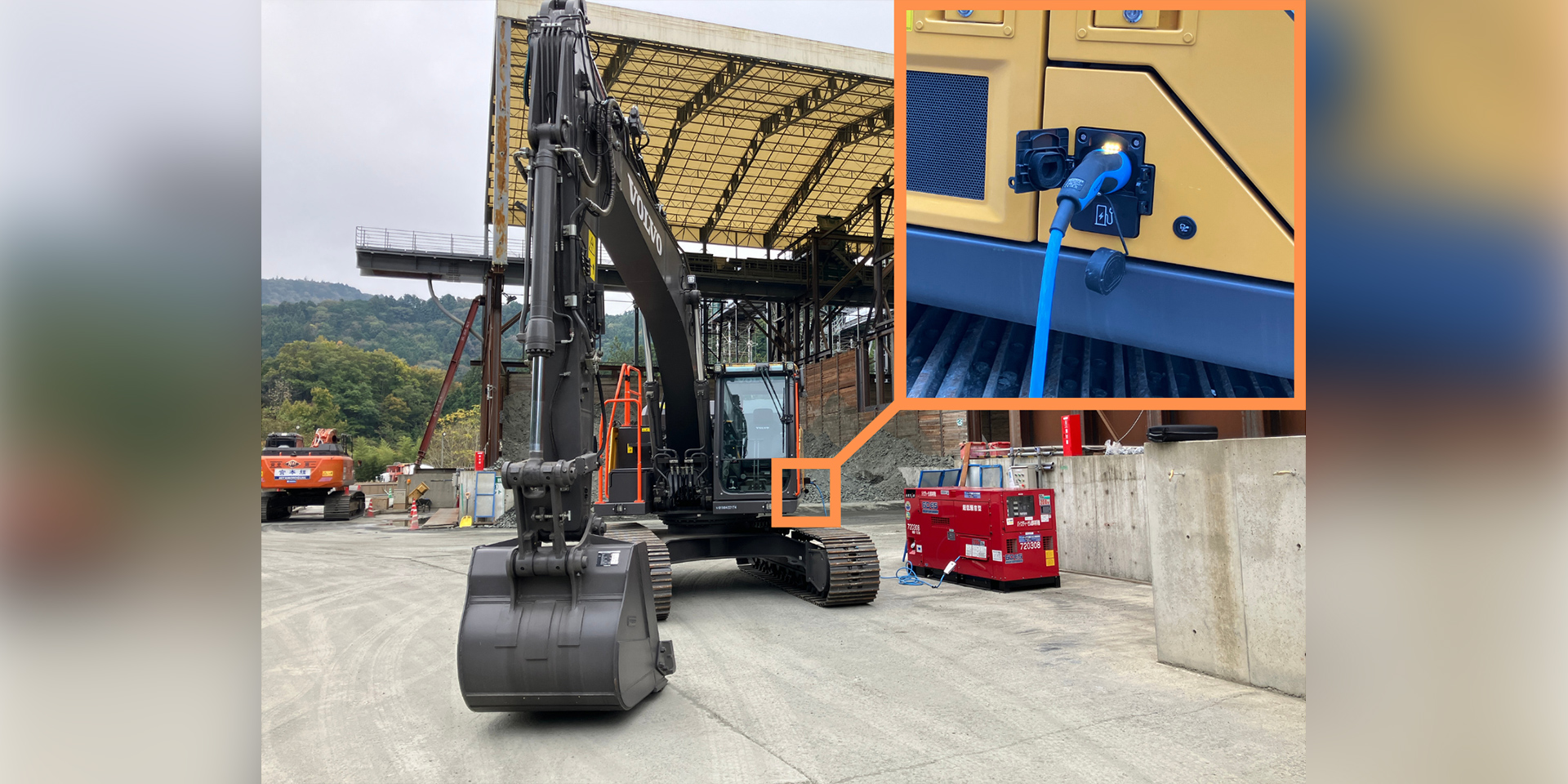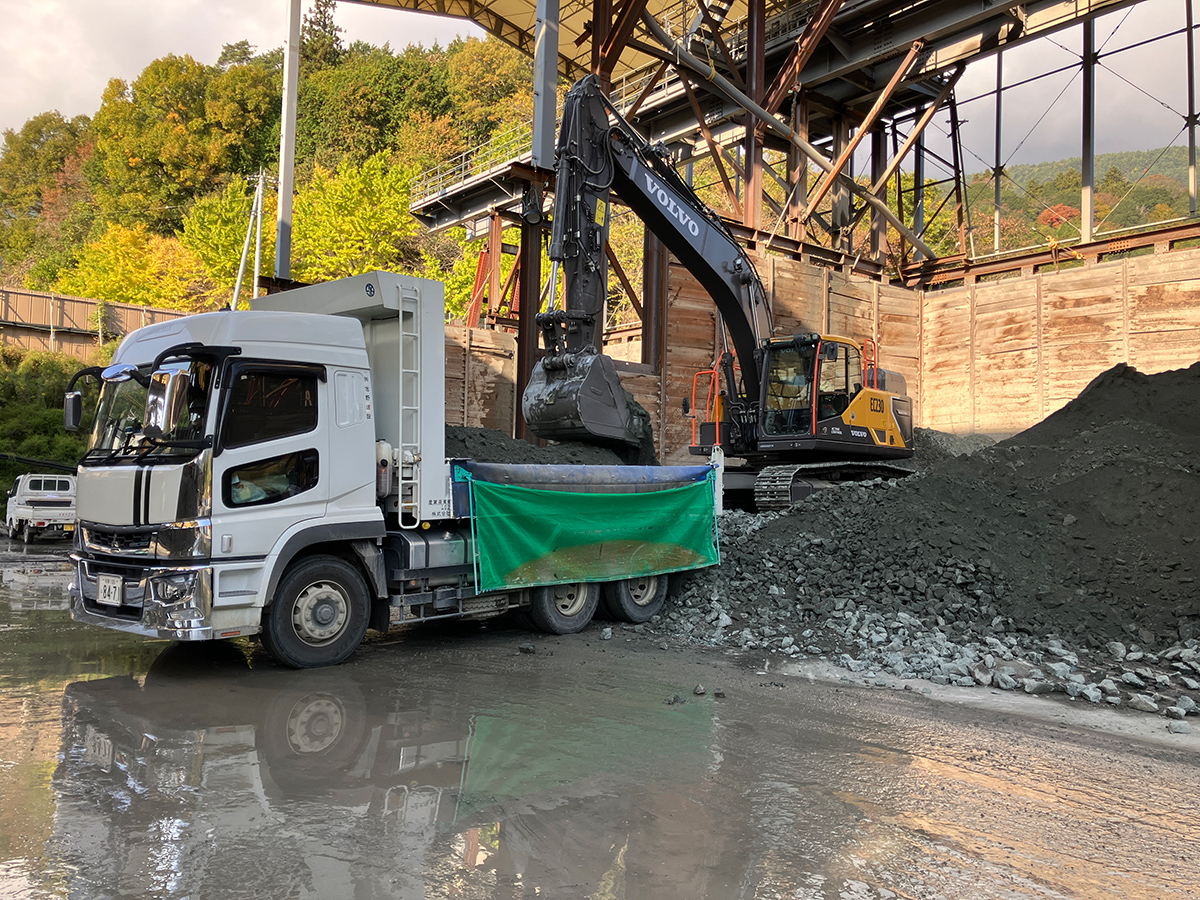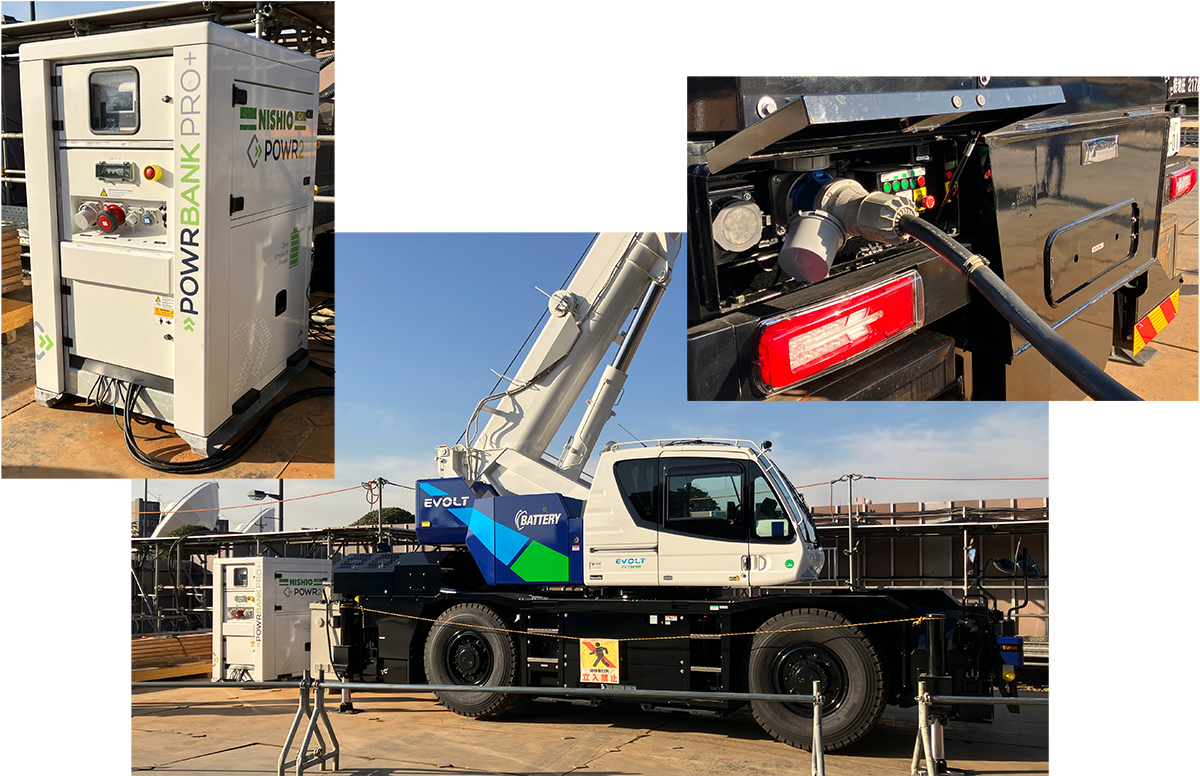Please note that some content is only available in Japanese

Use of Battery-Powered Large Electric Construction Equipment
First on-site deployment of a 20-ton class battery-powered hydraulic excavator in Japan
POINT
-
Aiming to achieving zero-carbon construction

Battery-powered hydraulic excavator in operation
Approximately 70% of CO2 emissions (Scope 1 + 2) from our construction activities come from diesel fuel. One key approach to realizing zero-carbon construction is the use of large electric construction machinery. By powering such machinery with electricity derived from renewable energy, it’s possible to reduce CO2 emissions to zero. However, using battery-powered heavy equipment on construction sites presents challenges such as: batteries not lasting a full day, long charging times, the need to move machines to charging stations, and high power demand for charging. To address these issues, we are advancing various initiatives involving mobile batteries and generators for on-site power supply and charging.
-
Powering large electric construction machinery with mobile batteries

Charging with a mobile battery
At a building construction site in the Tokyo metropolitan area, a 25-ton battery-powered mobile crane was introduced and adopted a mobile battery for charging and supply power. This setup allows the machine to be charged without moving it, enabling more flexible charging and securing the necessary operating hours. Greater flexibility in on-site charging times also helps minimize the impact on contracted power demand.
By using electricity derived from renewable energy, CO2 emissions were reduced by approximately 260 kg-CO2 per day per machine (about 32 tons-CO2 annually) compared to conventional methods. Obayashi is deploying mobile batteries and considering charging the batteries at other sites and using them as construction or emergency power sources. -
Charging with a biodiesel fuel-exclusive engine generator

Charging with a B100 biodiesel generator
At a civil engineering site in the Tokyo metropolitan area, a 20-ton class battery-powered hydraulic excavator was introduced and charged using an engine generator designed for biodiesel fuel. This approach enables charging even at sites where power supply is limited or where chargers cannot be installed near the work area. By using 100% biodiesel, CO2 emissions during machine operation can be reduced to zero.
It was confirmed that this setup reduces CO2 emissions by approximately 220 kg-CO2 per day per machine (around 53 tons-CO2 annually) compared to conventional equipment. Going forward, Obayashi will promote the use of generators to recharge batteries in construction projects where the availability of electricity is a problem.
